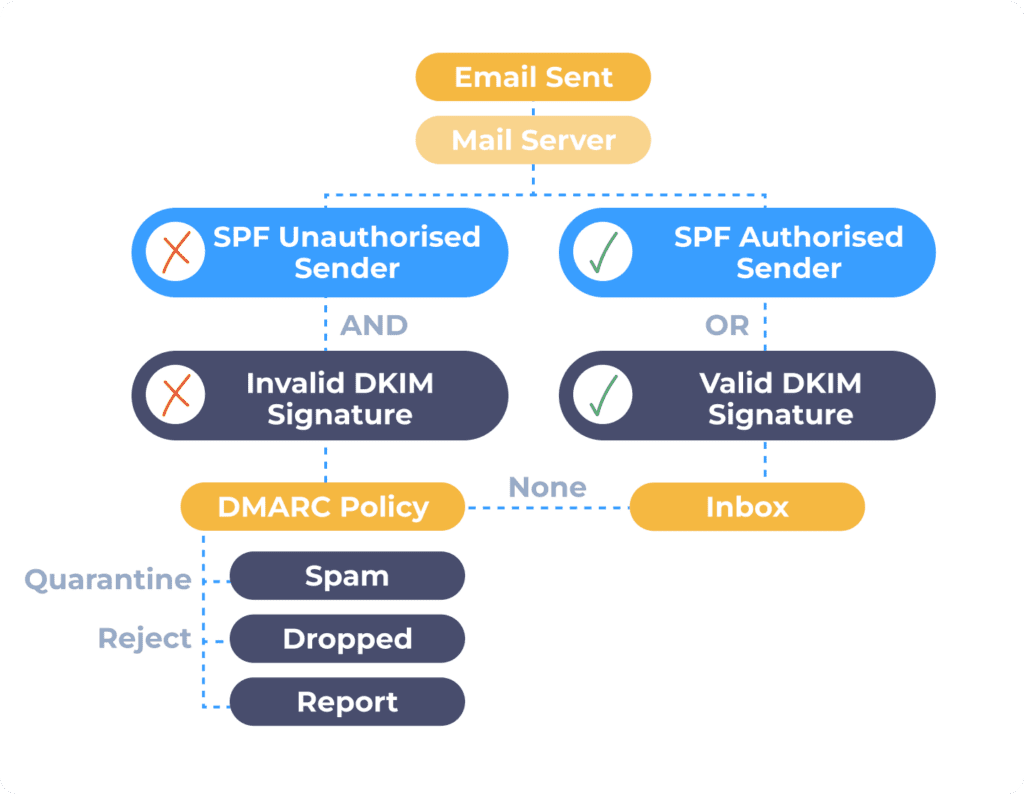As digital marketers, we’re well aware that the rules of engagement in the email marketing landscape are in a constant state of flux. It’s just like gas prices—they keep changing; we adapt and keep on driving. The latest shift on the horizon comes from two heavyweights in the email provider arena—Gmail and Yahoo. Both giants are set to implement changes in February 2024. For email marketers, this means adapting to new, stricter authentication requirements that, if not met, could have adverse effects on email deliverability and potentially mark emails as spam.
With cyber threats and phishing attacks on the rise, the industry is thinking a lot about our different roles and responsibilities in safeguarding users. Gmail has long been at the forefront of email filtering technology, claiming to block 15 million emails per day and utilizing AI to sort, identify, and block up to 99.9% of unwanted emails. The new changes are aimed at further creating a robust email security environment and have broad applicability, including any senders who dispatch more than 5,000 emails to Gmail subscribers daily.
Most of the changes are simply codifying best practices into requirements but they do also include an industry-first—a maximum spam rate threshold of 0.3%.

It’s essential to understand and implement two key changes to ensure your emails continue to reach customers and donors effectively:
- Set up DMARC Authentication.
This step is vital, and while it may pose a bit of a challenge, it’s a non-negotiable requirement. Check your domain’s DMARC status using tools like https://domain-checker.valimail.com/dmarc/.

- Make it Easy to Unsubscribe.
Include a list-unsubscribe header for one-click unsubscribes. Many ESPs, including Klaviyo, are automating this process. Maintain a clearly visible unsubscribe option within the email body.

It’s also important to educate users on precautions and best practices. Encourage subscribers to whitelist your email address, regularly check spam folders, and report any suspicious emails.
How to Prepare for and Ensure Future Deliverability:
These changes aren’t the first and they won’t be the last, underscoring how important proactive measures are to maintaining optimal email deliverability. Here are a few other best practices to help you stay ahead of the storm:
- List Cleansing:
Regularly clean your email list to remove inactive or disengaged subscribers.
- IP Warming:
Gradually warm up new IP addresses to establish a positive sending reputation.
- Deliverability Strategy:
Develop and implement a robust deliverability strategy to optimize inbox placement.
- Set up Google Postmaster:
Leverage Google Postmaster Tools for valuable insights into your sending reputation.
- Litmus Testing:
Ensure every email is tested through Litmus to meet evolving requirements.
- Consider BIMI:
While a lengthy process, consider adding BIMI (Brand Indicators for Message Identification), especially for large e-commerce or financial institutions.
As Gmail and Yahoo gear up to implement stricter email sender requirements in February 2024, we digital marketers must proactively adapt to ensure our messages continue to land in inboxes. These changes confirm the industry is continuing to trend toward tighter security measures as customers seek a more secure digital communication landscape. Proactive compliance will ensure your emails get delivered, improve the overall effectiveness of your email marketing campaigns, and build deeper trust with your customers.
And if you need a hand preparing for these changes or want a review of your current deliverability or authentication efforts, we’re here to help! You can find us at melanie.buck@crometrics.com and james.buo@crometrics.com.

